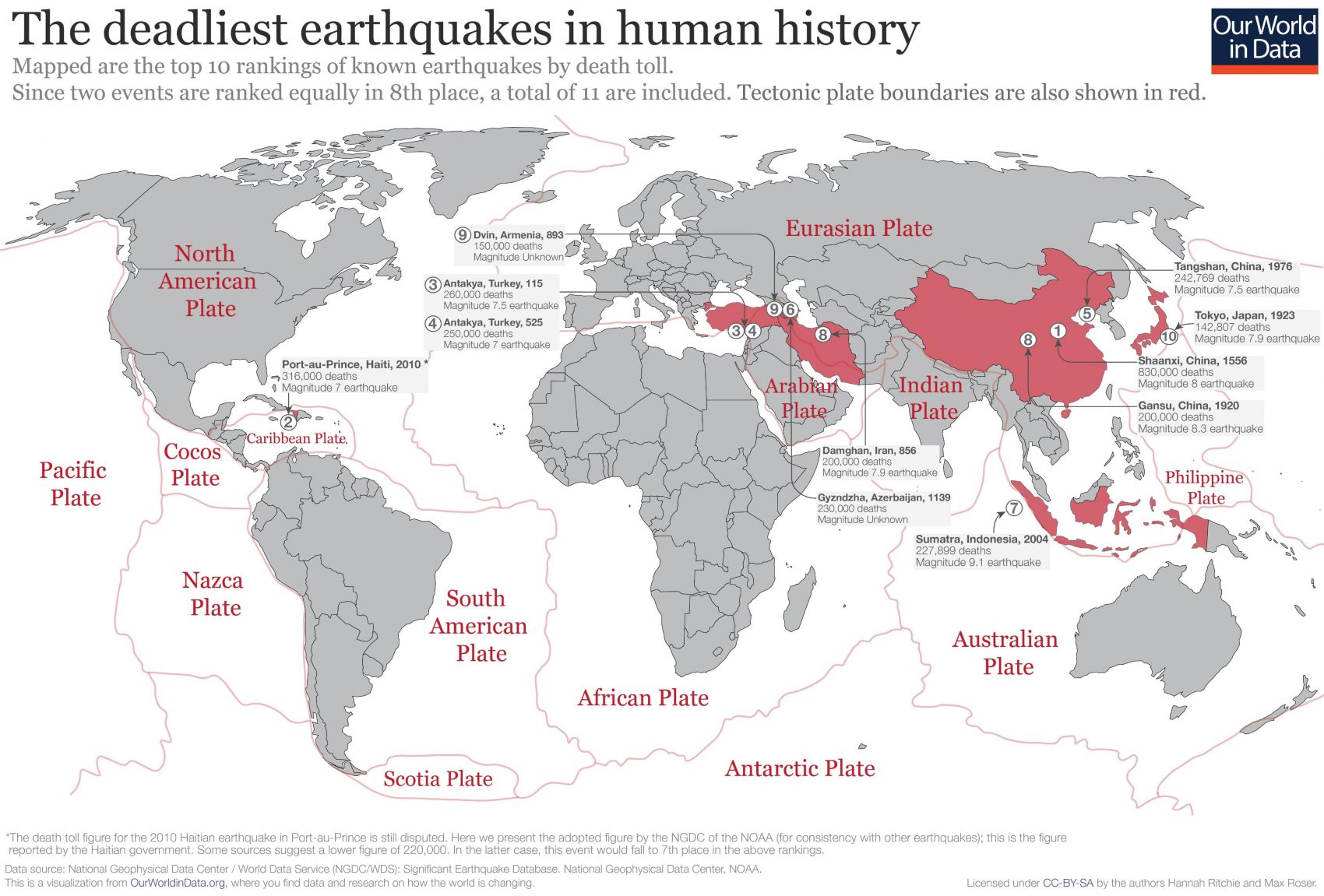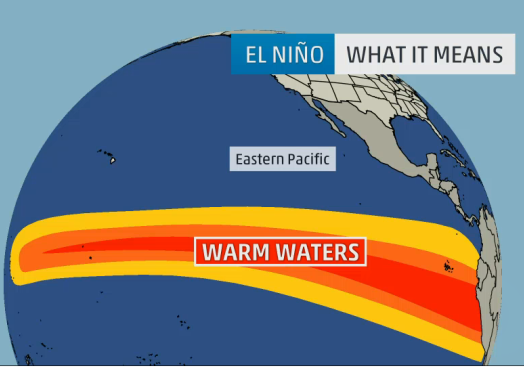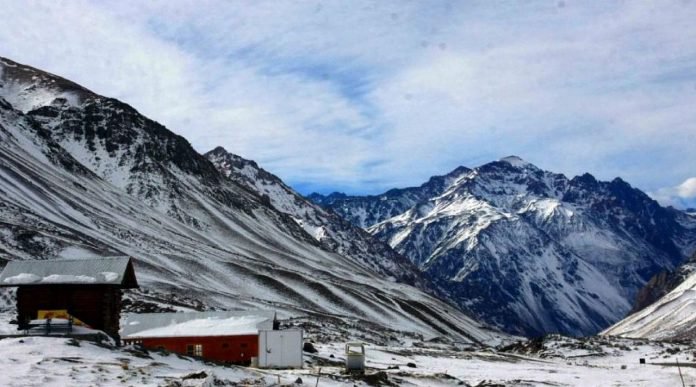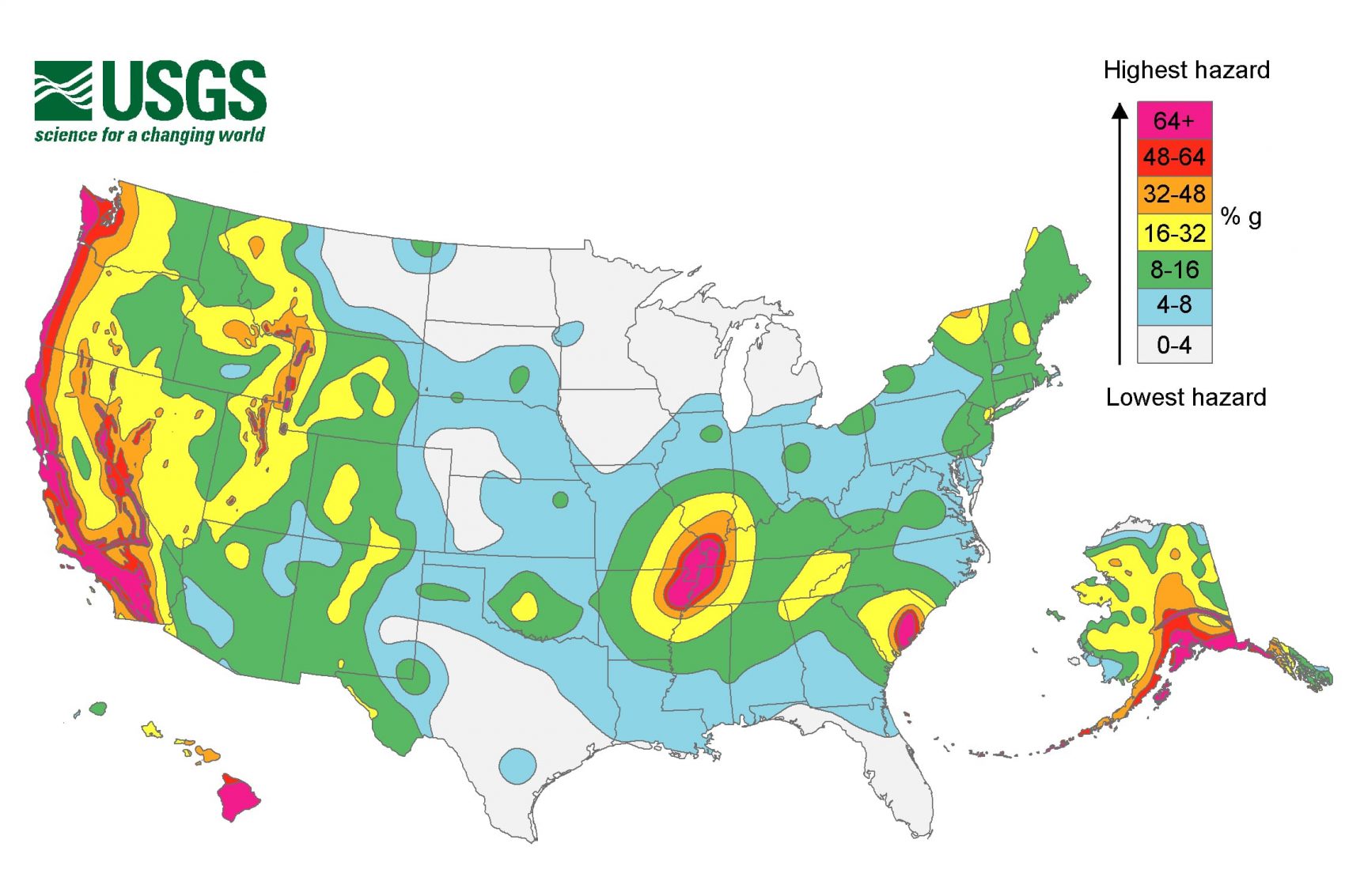
According to the United States Geological Survey, an “earthquake is a term used to describe both sudden slip on a fault, and the resulting ground shaking and radiated seismic energy caused by the slip, or by volcanic or magmatic activity, or other sudden stress changes in the earth.” Every year, there are around 20,000 earthquakes that occur, and throughout history, they have killed several millions of people. While many earthquakes are too small to be noticed or even measured, others are so large that they have to be measured by their death toll. The five deadliest earthquakes in Earth’s history have killed nearly two million people alone and occurred in regions all over the globe.
5. Tangshan, China – 1976
On July 28, 1976, in the early hours of the morning, a 7.8 magnitude earthquake destroyed the coal-mining city of Tangshan. The official death toll recorded 242,769 losses, but other estimates have doubled that number, reporting more than half of the city’s population dying in the earthquake. The city was built without considering the threat of earthquakes, so at least 85% of its buildings collapsed when it hit. According to the earthquake’s report, “the earthquake caused the failures of the electric power system, the water supply system, the sewer system, the telephone and telegraph systems, and radio communications.” The highway system, mining system, and almost all types of infrastructure, including the entire economy, were destroyed. However, the city of Tangshan has been built back up since 1976.
4. Antakya, Turkey – 526 A.D.
In late May of 525 A.D., an earthquake with a magnitude of 7 completely took out the city of Antioch. Reportedly, there were 250,000 casualties with shocks lasting for up to 18 months. The earthquakes immediately caused several large fires, which were made stronger by winds, and these fires accounted for much of the total death count. Surrounding towns were also ravaged, with many of their buildings collapsing, including The Great Church.
3. Antakya, Turkey – 115 A.D.
On a late December night, a 7.5 magnitude earthquake destroyed over “two-thirds of Antioch.” 260,000 casualties were reported, and the earthquake triggered a tsunami that damaged the infrastructure of Lebanon. The aftermath of this earthquake spread far and wide, affecting almost everyone in the region. Since these two massive earthquakes in Antakya, Turkey, the Antakya Fault Line has been further studied and reported on.
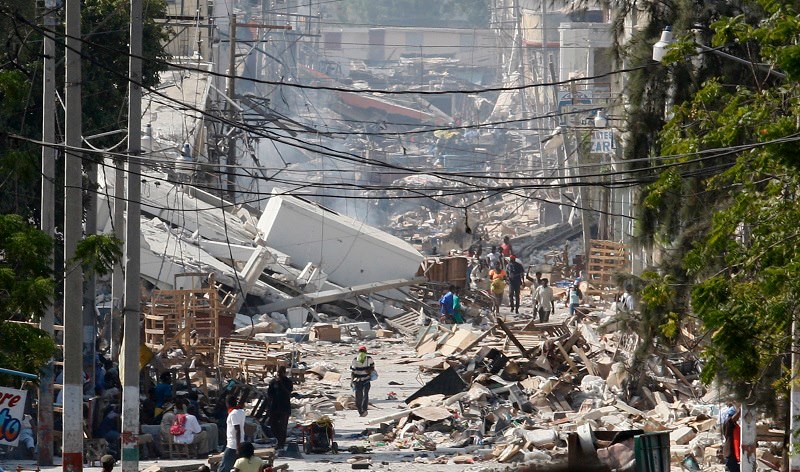
2. Port-au-Prince, Haiti – 2010
The 2010 earthquake in Haiti was highly publicized and is one of the worst natural disasters in history. When a 7 magnitude earthquake hit Haiti’s capital on January 12, 2010, an estimated 316,000 people died, with over 300,000 others suffering from injuries and over 5 million Haitians becoming displaced. The earthquake occurred only 6 miles below the earth’s surface, which is considered a shallow earthquake. In 2010, over 70% of Haiti’s population was living in poverty, and the multi-story buildings of Port-au-Prince were built without any safety protocol or code. This earthquake is highly representative of the idea that natural disasters are also social disasters and need to be treated as such. The mass destruction caused by this earthquake is still ongoing, even with over $16 billion in aid given, but it is crucial to understand that much of this damage could have been prevented with stronger infrastructure. One way to help this situation is to sponsor a child in Haiti, or better yet, visit the country and make a personal difference.
1. Shaanxi, China – 1556
The deadliest earthquake ever recorded occurred on January 23, 1556, leaving an estimated 830,000 people dead. The earthquake had a magnitude of 8, and the epicenter was located closest to Huaxian in Shaanxi. The earthquake apparently only lasted for a few seconds, but “it leveled mountains, altered the path of rivers, caused massive flooding, and ignited fires that burned for days.” Infrastructure during this time was extremely weak and was not strong enough to hold off the damages caused by this earthquake. Nearly 100 countries were affected, with several of them reporting a 60% loss of their population. This disaster is the third deadliest ever recorded in Earth’s history and highlights the importance of preparing for earthquakes and ensuring that infrastructure is sound enough to withstand their consequences.
